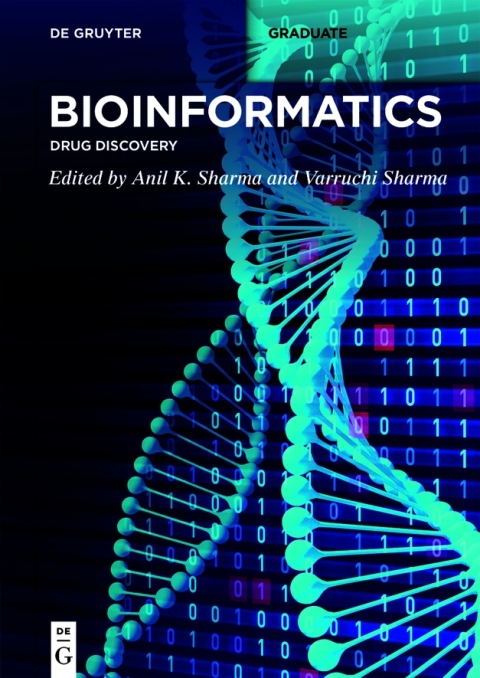Description
Efnisyfirlit
- Contributors
- Nitin Sharma, Manika Choudhary, Vikas Kumar Chapter 1 Introduction to bioinformatics
- 1.1 Introduction
- 1.2 Biological databases
- 1.3 Bioinformatics tools
- 1.4 Scope of bioinformatics
- 1.5 Applications of bioinformatics
- 1.5.1 Medicine
- 1.5.2 Microbial genome applications
- 1.5.3 Agriculture
- 1.5.4 Bioweapon creation
- 1.5.5 Evolutionary studies
- 1.5.6 Forensic science
- 1.5.7 Antibiotic resistance
- 1.6 Limitations
- 1.7 Conclusions
- Varruchi Sharma, Imran Sheikh, Vikas Kushwaha, Shagun Gupta, Ankur Kaushal, Seema Ramniwas, Poonam Bansal, Anupam Sharma, Vandana Sharma, J. K. Sharma, Anil Panwar, Anil Kumar Sharma Chapter 2 Biological databases and bioinformatics tools
- 2.1 Introduction
- 2.2 Classification of biological databases
- 2.2.1 Primary database
- 2.2.2 Secondary database
- 2.2.3 Composite database
- 2.2.4 Additional databases
- 2.3 Biological database retrieval system
- 2.3.1 Entrez
- 2.3.2 Sequence retrieval system (SRS)
- 2.3.3 DBGET/LinkDB
- 2.4 Bioinformatics tools
- 2.5 Conclusions
- Varruchi Sharma, Poonam Bansal, Imran Sheikh, Anupam Sharma, Damanjeet Kaur, Amit Joshi, Anil K. Sharma Chapter 3 Fundamentals of bioinformatics
- 3.1 Introduction
- 3.2 Bioinformatics association with other domains
- 3.3 Applications of bioinformatics
- 3.4 Database development
- 3.5 Sequence alignment and its types
- 3.6 Scoring a sequence alignment
- 3.7 Dot plot method
- 3.8 Applications of pairwise sequence alignment method
- 3.9 Dynamic programming
- 3.10 Longest common subsequence
- 3.11 Conclusions
- Varruchi Sharma, Imran Sheikh, Vikas Kushwaha, Anil Panwar, Seema Ramniwas, Anupam Sharma, Vandana Sharma, J. K. Sharma, Sonal Datta, Anil K. Sharma Chapter 4 Tools used in sequence alignment
- 4.1 Multiple sequence alignment
- 4.2 BLAST
- 4.2.1 Working of BLAST
- 4.2.2 Programs of BLAST
- 4.2.3 BLAST results
- 4.3 T-Coffee
- 4.4 HMMER
- 4.4.1 Working with HMMER (https://www.ebi.ac.uk/Tools/hmmer/) (Figure 4.7)
- 4.5 DIAMOND
- 4.6 ScalaBLAST
- 4.7 Sequence alignment/map
- 4.8 MALIGN
- 4.9 COMPASS
- 4.10 Conclusion
- Ramesh C. Thakur, Akshay Sharma, Renuka Sharma Chapter 5 Recent advances in the discovery of drug molecules: trends, scope, and relevance
- 5.1 Introduction
- 5.2 Natural drugs
- 5.2.1 Plant, animal, and microbial sources
- 5.2.2 Animal sources
- 5.2.3 Microbial sources
- 5.2.4 Marine sources
- 5.2.5 Mineral (metallic and nonmetallic) sources
- 5.2.6 Geographical or habitat sources
- 5.3 Synthetic drugs or designer drugs
- 5.3.1 Semisynthetic
- 5.4 Drug content
- 5.4.1 Active ingredient
- 5.4.2 Excipient: inactive ingredient
- 5.5 Drug categories
- 5.5.1 Stimulants
- 5.5.2 Inhalants
- 5.5.3 Cannabinoids
- 5.5.4 Depressants
- 5.5.5 Opioids and morphine derivatives
- 5.5.6 Anabolic steroids
- 5.5.7 Hallucinogens
- 5.5.8 Prescription drugs
- 5.6 Drug design
- 5.7 Lipinski’s rule
- 5.8 Hydrophobicity of a drug
- 5.9 Role of partition coefficient in drug design
- 5.10 Biological activity of a drug
- 5.11 Natural products as leads
- 5.12 Natural products-based drug development
- 5.13 Conclusion and future recommendations
- Meenakshi Rajpoot, Varruchi Sharma, Shagun Gupta, Ankur Kaushal, Anupam Sharma, Vandana Sharma, J. K. Sharma, Anil Panwar, Seema Ramniwas, Damanjeet Kaur, Anil K. Sharma Chapter 6 Computer-aided drug design and drug discovery
- 6.1 Introduction
- 6.2 Structure-based drug design
- 6.2.1 Protein structure determination and hot spot prediction
- 6.2.2 Virtual screening
- 6.2.3 Docking and scoring functions
- 6.3 Ligand-based drug designing
- 6.3.1 Similarity searching method
- 6.3.2 Pharmacophore modeling
- 6.3.3 Quantitative structure–activity relationship
- 6.4 Sequence-based drug design
- 6.5 Role of molecular dynamics simulations in drug discovery
- 6.6 Success stories of computational drug discovery approaches
- 6.7 Conclusion and future perspectives
- Vikas Kushwaha, Anu Prabha, Varruchi Sharma, Ashwanti Devi, Seema Ramniwas, Anupam Sharma, Anil K. Sharma, Imran Sheikh, Anil Panwar, Damanjeet Kaur Chapter 7 Immunoinformatics: computational keys to immune system secrets
- 7.1 Introduction
- 7.2 Data sources
- 7.2.1 Laboratory immunological experiments
- 7.2.2 Scientific literature
- 7.2.3 Immunological databases
- 7.2.4 B-cell epitope databases
- 7.2.5 T-cell epitope databases
- 7.3 Immunological tools
- 7.3.1 B-cell epitope prediction
- 7.3.2 T-cell epitope prediction
- 7.3.3 Linkers
- 7.3.4 Allergenicity and antigenicity prediction tool
- 7.3.5 Design optimization
- 7.4 Conclusion
- Vikas Kumar, Nitin Sharma Chapter 8 Phylogenetic analysis
- 8.1 Introduction
- 8.2 Phylogenetic tree and its construction
- 8.3 Various tools in phylogenetic analysis
- Sheetal Dagar, Anil Panwar, Varruchi Sharma, Imran Sheikh, Vikas Kushwaha, Damanjeet Kaur, Anil K. Sharma, Srikant Kaushik Chapter 9 Basic structure of proteins: current paradigms, trends, and perspective
- 9.1 Amino acids
- 9.1.1 Classification
- 9.2 Peptides
- 9.3 Dihedral angles
- 9.4 Proteins
- 9.5 Hierarchy of proteins
- 9.6 Primary structure
- 9.7 Secondary structure
- 9.8 Alpha helix
- 9.9 Beta sheet
- 9.10 Beta turns
- 9.11 Loops or coils
- 9.12 Tertiary structure
- 9.13 Motifs and domains
- 9.14 Domain
- 9.15 Quaternary structure
- 9.16 Methods for determination of proteins’ 3D structure
- 9.17 X-ray crystallography
- 9.18 Protein secondary and tertiary structure prediction (programs)
- Homology modeling
- Threading/fold recognition
- Ab initio structure prediction
- Secondary structure prediction
- 9.19 Conclusion
- Index








Reviews
There are no reviews yet.